As it’s been a while now since I’ve come back from the States, I’ve decided to do a sort of roundabout tour of some of the interesting things I encountered along the way, not necessarily in chronological order. So one of the first things I’m going to talk about is something I visited fairly late on in my trip.

Como Bluff from a distance. (source)
And that’s it. That big lump of (admittedly, nicely multicoloured) hill is something that Susie and I decided to drive a solid hour out of our way (much to the annoyance of everyone else involved) to stare at from a distance. Why you ask? Because it was one of the first major sites for dinosaur discoveries in the USA.
Como Bluff is a large ridge of folded rock that’s situated in South East Wyoming. It consists of three separate geological formations, or packages of rock: The Sundance, The Morrison, and the Cloverly. These rocks range from Jurassic to Early-Cretaceous in age, and record a time in North America’s history where the Sundance Ocean, a Jurassic Epicontinental Sea, regressed to leave continental conditions again. The center of what is now North America became part of an extensive alluvial plane, where lakes and winding river systems were commonplace. Continued sea level rise and mountain building processes eventually would lead to flooding of the land from the north and the south, and the creation of the Western Interior Seaway. Elsewhere in the world the supercontinent Pangea was in the process of breaking apart and famous marine formations such as the Lias of the Jurassic Coast and the Solnhofen limestone of Germany (where the first Archaeopteryx was found) were being deposited in Europe. As such, this was a dynamic time in Earth’s history, and these three rock formations provide a fantastic window into the ecology and fauna of the time.
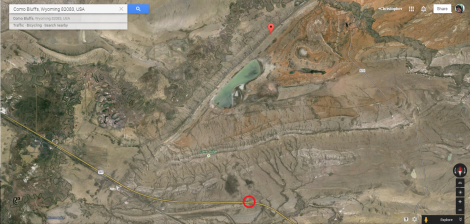
An aerial view of the region around Como Bluff. The point shows the specific location of the Bluff itself, and the red circle indicates the position of the information board we arrived at.
And what a window it proved to be. Como Bluff was first discovered in the midst of the Bone Wars in the 1870’s. The Bone Wars was a period of intense fossil discovery in the United States led by a feud between Edward Drinker Cope and Othniel Charles Marsh, two prominent palaeontologists at the time. Whilst the relationship between Cope and Marsh began amicably, before long the two scientists were using any means necessary to collect and describe more species of dinosaur than the other; theft, bribery and destruction of specimens were all used to gain an upper hand in this supposed quest for knowledge. As you can probably tell, the Bone Wars is a topic that is well deserving of its own post so I won’t go into too much detail here, but it’s also what lead to the discovery of Como Bluff.
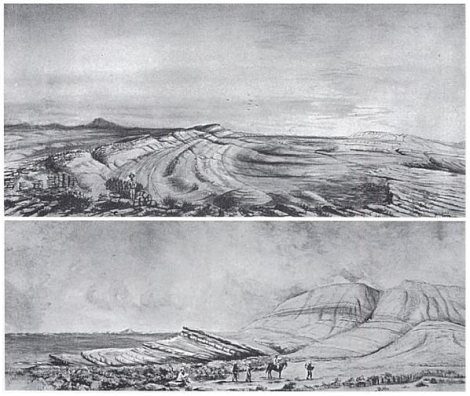
Sketches of Como Bluff by Arthur Lakes, an associate of Marsh, in 1879. Quarries can be seen in the notches and lower sections of the ridge. From Marsh’s Dinosaurs: The Collections From Como Bluff
In late July of 1877, Marsh received a letter from two men who identified themselves as “Harlow and Edwards” of Laramie, who described a find of bones that might be of interest. After receiving a box of material, Marsh quickly recognized the importance of the find and requested additional material. However, it took a second letter from the duo to spur him into action: it was apparent that the men who had made the discovery worked for the Union Pacific Railroad, were using pseudonyms and delivering the material away from the site as to not draw attention to it. Additionally, it was hinted that if financial arrangements were not made, they would alert Cope to the discovery. After suitable reimbursement was provided, Marsh began to receive boxes upon boxes of material, which would contain the very first specimens of some of the most famous dinosaurs: Allosaurus, Stegosaurus and Diplodocus.
However, this was only the beginning of the history of Como Bluff. After word got out of the arrangement between Marsh and the Railroad workers, Cope sent his own representatives to the site to barter a deal. When negotiations failed, Cope’s men were instructed to steal bones from Marsh’s quarry. This, combined with one of the railroad men becoming dissatisfied with working for Marsh and defecting to work for Cope, lead to Como Bluff becoming the focal point of the Bone Wars until the very final year of 1889.
And this is what the area surrounding Como Bluff looks like today. Unfortunately the quarries themselves are not accessible to the public. What’s even more of a shame is that the visitor center built of actual dinosaur bones (!!!) has been officially closed since 2011, with what appears to be little hope of restoration. It was an oddly melancholy sight to see the decaying hand painted billboards lying on the floor and the big FOR SALE sign posted outside, especially combined with the backdrop of the endless rolling landscape of Wyoming, with not a single human around for what seemed like hundreds of miles.
Finally, before leaving, Susie and I got our dino-geek on and grabbed a photo in front of the information board. Palaeontology tourism at its finest.
Hope you’ve enjoyed that little foray into a piece of Wyoming’s dinosaur history. Next time I’ll be talking about planning fieldwork and the best techniques to use!
If you’re interested in more of the history of Como Bluff, Marsh’s Dinosaurs by John Ostrom and John McIntosh gives an excellent overview of the history of the site, as well records of the material collected.
Todays’ post title comes from this great song (and this great TV series).


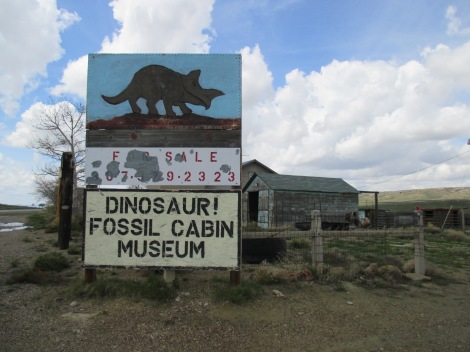
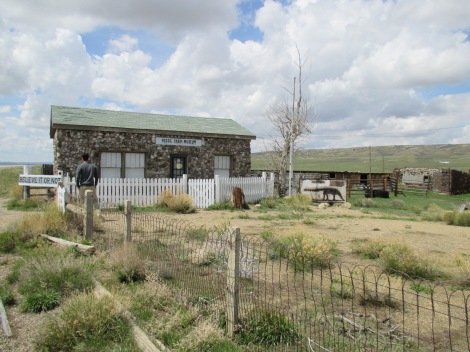
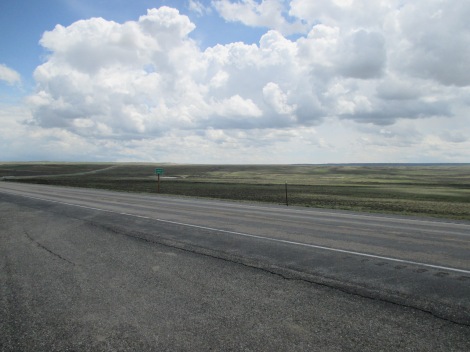
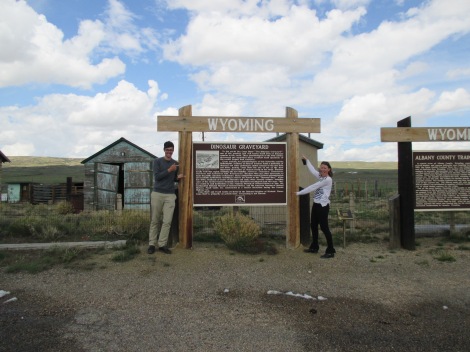
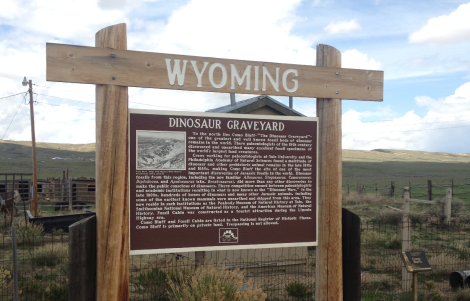
Nice read Chris. Keep up the good work, after all I need something to read at work, Iain
LikeLike
Great work. Please contact me as soon as possible.
>
LikeLike